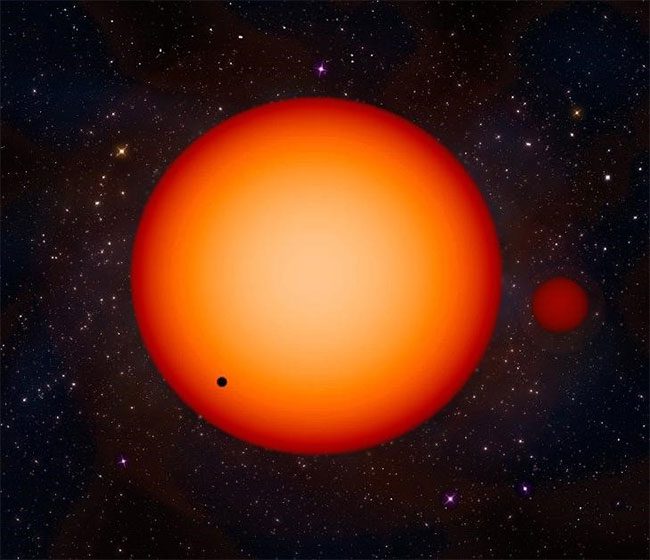Scientists in China have revealed unprecedented details about a system of three young stars, shedding light on how complex systems operate in the universe.
According to the South China Morning Post, inspired by the famous science fiction novel The Three-Body Problem by author Liu Cixin, researchers from Hangzhou Dianzi University, the Chinese Academy of Sciences, and the Three Gorges University have confirmed a real-world three-star system located approximately 1,300 light-years from Earth. They have observed these three stars at the edge of the Orion constellation.

Multiple star systems are very common in the galaxy. (Photo: Shutterstock).
The scientists utilized NASA’s observational data to search for periodic changes in the brightness of the three stars, collectively referred to as GW Ori.
According to researcher Tian Haijun, the results published in the journal Chinese Physics, Mechanics & Astronomy provide crucial evidence about the geometric structure and evolution of this star system.
Mr. Tian, a scientist at Hangzhou Dianzi University, and his colleagues studied data from the Transiting Exoplanet Survey Satellite (TESS) to monitor the GW Ori system, which includes two stars orbiting each other, while a third star orbits this binary pair at a greater distance.
“For the first time, we were able to detect two brief signals and accurately measure the rotation period of this binary pair, which is about 2 to 3 days. This rapid rotation phenomenon indicates that these stars are very young and different from the Sun, which rotates once every 25 days,” Mr. Tian said.
Multi-star systems form when a massive molecular cloud collapses under gravitational forces, creating two or more stars. Mr. Tian noted that the remaining objects may evolve into planets. However, all objects within a system are complexly bound together by gravity, leading to intricate interactions within the multi-star system.
“The movements and interactions of these stars can become so complex that if life existed there, it could have been destroyed and reborn multiple times,” Mr. Tian remarked.
According to Mr. Tian, the three-star system is produced according to certain laws and is not an exception in the galaxy, though it is not a common phenomenon. He stated that over half of the stars in the galaxy have one or more “partners.”
“Although these star systems are very challenging to observe, we hope to use more advanced telescopes, including the upcoming Chinese Space Station Telescope (CSST), to gain deeper insights into their formation and functioning,” he added.

Illustration of the Kepler-38 binary star system. (Photo: Wikipedia).
Mr. Tian and his colleagues aim to carry out more precise measurements of the GW Ori system once CSST is operational in low Earth orbit. This telescope will be equipped with an integrated field spectrograph, which has very high spatial resolution.
“The space telescope will be a valuable tool for astronomers worldwide to study the formation and evolution of fascinating multi-star systems like GW Ori,” Mr. Tian stated.
Previously, scientists also studied the GW Ori system using telescopes, such as the Atacama Large Millimeter Array in Chile. Earlier research indicated that all three stars are slightly heavier than the Sun.
Mr. Tian’s research team conducted a detailed analysis of TESS data over three months. The results displayed the light curve of the GW Ori system with two signals having periods of 3.02±0.15 days and 1.92±0.06 days, respectively.
After excluding the possibilities of eclipses and other factors, the researchers concluded that these signals likely originated from the phenomenon of star spots—similar to sunspots—on the surfaces of stars GW Ori A and B.
The researchers also ruled out the influence of artificial factors, as the process of life formation on Earth takes at least hundreds of millions of years, while the GW Ori system is too young for that. They calculated the inclination of the stars and discovered that the rotation planes of GW Ori A and B are nearly parallel to their orbital plane in a binary formation.
“This means that the shape and operating mode of the binary system are relatively simple,” Mr. Tian commented.




















































